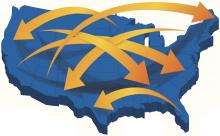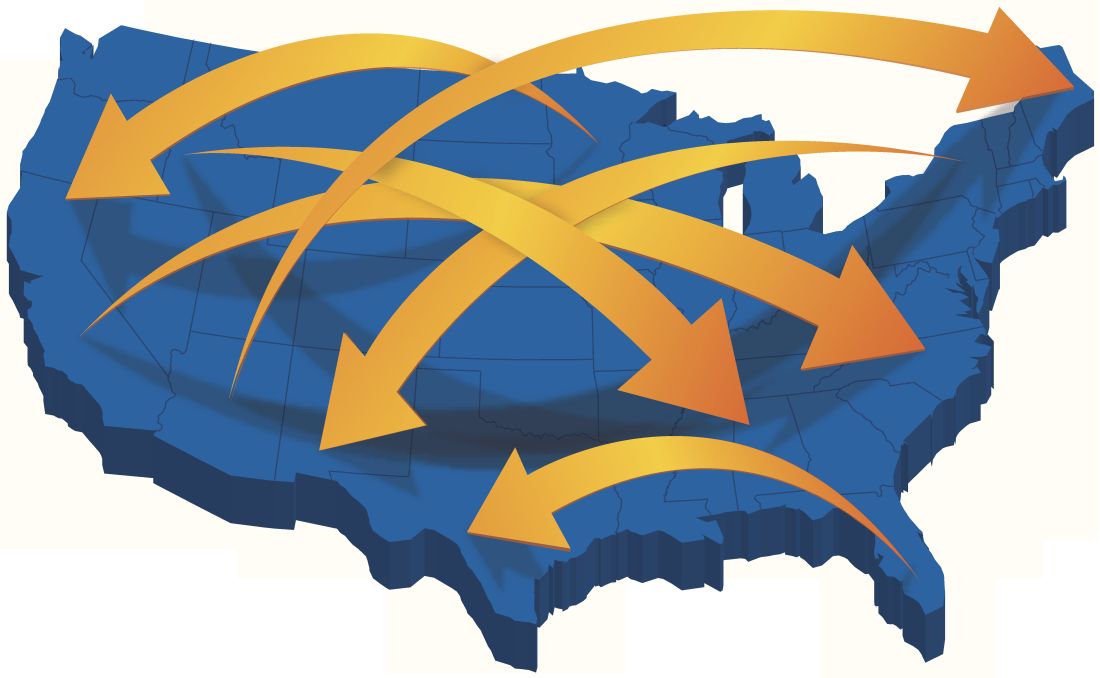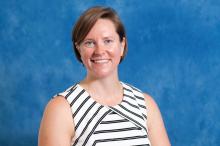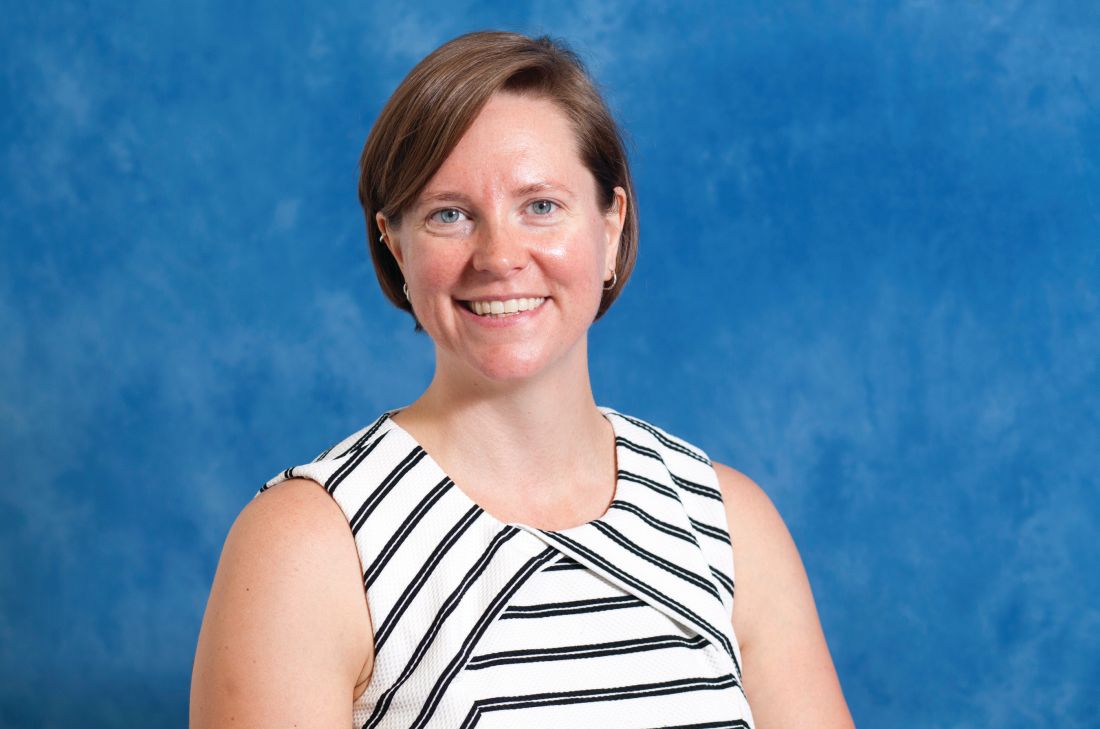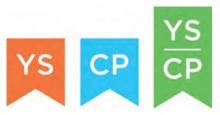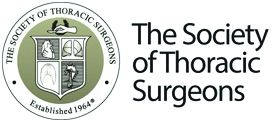User login
Friday - On Tap
What will happen Friday that people will be talking about Saturday? All of the below, and much more:
• 6:30 to 8:00 a.m. Breakfast Sessions: Pushing the boundaries in managing PAD, managing arterial infections and the aging of vascular surgeons. See Mobile App for room locations.
• 8:00 - 11:00 a.m.Plenary Sessions 4 through 6. Room 6 A/B. See Mobile App for abstracts and times.
• 11:00 a.m. Presidential address from Dr. Ronald M. Fairman. President-Elect Dr. R. Clement Darling, III, will introduce Dr. Fairman. Room 6 A/B.
• 3:30 to 5:00 p.m. Six Concurrent Sessions: the SVS/ESVS debate, joint sessions with the STS and AVF, an update on clinical practice guidelines and introduction of global vascular guidelines, and the Poster Competition. See Mobile App for details and room locations.
• 12:15 to 1:30 p.m. The Vascular Surgery Trainee Luncheon, Room 6C. Topics include how to find a job and “day in the life” stories from recent 5+2 and 0+5 graduates. Register at the Registration Counter.
• 5:00 to 6:30 p.m. Residency Fair. Exhibit Hall A.
What will happen Friday that people will be talking about Saturday? All of the below, and much more:
• 6:30 to 8:00 a.m. Breakfast Sessions: Pushing the boundaries in managing PAD, managing arterial infections and the aging of vascular surgeons. See Mobile App for room locations.
• 8:00 - 11:00 a.m.Plenary Sessions 4 through 6. Room 6 A/B. See Mobile App for abstracts and times.
• 11:00 a.m. Presidential address from Dr. Ronald M. Fairman. President-Elect Dr. R. Clement Darling, III, will introduce Dr. Fairman. Room 6 A/B.
• 3:30 to 5:00 p.m. Six Concurrent Sessions: the SVS/ESVS debate, joint sessions with the STS and AVF, an update on clinical practice guidelines and introduction of global vascular guidelines, and the Poster Competition. See Mobile App for details and room locations.
• 12:15 to 1:30 p.m. The Vascular Surgery Trainee Luncheon, Room 6C. Topics include how to find a job and “day in the life” stories from recent 5+2 and 0+5 graduates. Register at the Registration Counter.
• 5:00 to 6:30 p.m. Residency Fair. Exhibit Hall A.
What will happen Friday that people will be talking about Saturday? All of the below, and much more:
• 6:30 to 8:00 a.m. Breakfast Sessions: Pushing the boundaries in managing PAD, managing arterial infections and the aging of vascular surgeons. See Mobile App for room locations.
• 8:00 - 11:00 a.m.Plenary Sessions 4 through 6. Room 6 A/B. See Mobile App for abstracts and times.
• 11:00 a.m. Presidential address from Dr. Ronald M. Fairman. President-Elect Dr. R. Clement Darling, III, will introduce Dr. Fairman. Room 6 A/B.
• 3:30 to 5:00 p.m. Six Concurrent Sessions: the SVS/ESVS debate, joint sessions with the STS and AVF, an update on clinical practice guidelines and introduction of global vascular guidelines, and the Poster Competition. See Mobile App for details and room locations.
• 12:15 to 1:30 p.m. The Vascular Surgery Trainee Luncheon, Room 6C. Topics include how to find a job and “day in the life” stories from recent 5+2 and 0+5 graduates. Register at the Registration Counter.
• 5:00 to 6:30 p.m. Residency Fair. Exhibit Hall A.
Stop By, Say Hi! 6 Great Reasons to Visit the Membership Booth
While you’re in the neighborhood, why not stop by the SVS Membership Booth, located just outside the plenary doors?
Whether you are a member of SVS or not, we’d love to see you. Here are some reasons you’ll be glad you did:
Enter to win a $500 gift card if you update your SVS member profile or fill out a membership form.
Pick up a memento – SVS pens, notebooks, even saltwater taffy – of your visit (while supplies last).
Members are encouraged to update their personal information – emails, addresses, and even names can change. Don’t let yourself fall off the contact lists!
Inquire about membership options; learn about the benefits of belonging.
Get help with your mobile app.
Bonus: If you update your member details AND make a donation to the SVS Foundation (adjoining booth), you can enter the contest twice.
While you’re in the neighborhood, why not stop by the SVS Membership Booth, located just outside the plenary doors?
Whether you are a member of SVS or not, we’d love to see you. Here are some reasons you’ll be glad you did:
Enter to win a $500 gift card if you update your SVS member profile or fill out a membership form.
Pick up a memento – SVS pens, notebooks, even saltwater taffy – of your visit (while supplies last).
Members are encouraged to update their personal information – emails, addresses, and even names can change. Don’t let yourself fall off the contact lists!
Inquire about membership options; learn about the benefits of belonging.
Get help with your mobile app.
Bonus: If you update your member details AND make a donation to the SVS Foundation (adjoining booth), you can enter the contest twice.
While you’re in the neighborhood, why not stop by the SVS Membership Booth, located just outside the plenary doors?
Whether you are a member of SVS or not, we’d love to see you. Here are some reasons you’ll be glad you did:
Enter to win a $500 gift card if you update your SVS member profile or fill out a membership form.
Pick up a memento – SVS pens, notebooks, even saltwater taffy – of your visit (while supplies last).
Members are encouraged to update their personal information – emails, addresses, and even names can change. Don’t let yourself fall off the contact lists!
Inquire about membership options; learn about the benefits of belonging.
Get help with your mobile app.
Bonus: If you update your member details AND make a donation to the SVS Foundation (adjoining booth), you can enter the contest twice.
At Opening Reception: Vendors, Posters, Raffle
Meet up with friends, visit vendor booths to see the latest and greatest in all things vascular, peruse the posters.
And enter a high-tech raffle to win a high-flying prize: two airline tickets to anywhere in the continental United States AND complimentary registration for the 2018 Vascular Annual Meeting. While traversing the Exhibit Hall, be sure to look for placards with QR codes in select exhibitor booths; scan the QR code and be automatically entered into the raffle. No pens, no paper required, just a smart phone and the QR code.
Industry support is vital to VAM, permitting registration fees considerably lower than those assessed at comparable annual meetings. Please show your support by visiting our vendors.
The reception coincides with the end of the Interactive Poster Session, set for 5:00 to 6:30 p.m. in the same location.
Thursday, June 1
5:00 – 6:30 p.m.
Exhibit Hall B
Interactive Poster Session
5:30 – 6:30 p.m.
Exhibit Hall B
Opening Reception
Meet up with friends, visit vendor booths to see the latest and greatest in all things vascular, peruse the posters.
And enter a high-tech raffle to win a high-flying prize: two airline tickets to anywhere in the continental United States AND complimentary registration for the 2018 Vascular Annual Meeting. While traversing the Exhibit Hall, be sure to look for placards with QR codes in select exhibitor booths; scan the QR code and be automatically entered into the raffle. No pens, no paper required, just a smart phone and the QR code.
Industry support is vital to VAM, permitting registration fees considerably lower than those assessed at comparable annual meetings. Please show your support by visiting our vendors.
The reception coincides with the end of the Interactive Poster Session, set for 5:00 to 6:30 p.m. in the same location.
Thursday, June 1
5:00 – 6:30 p.m.
Exhibit Hall B
Interactive Poster Session
5:30 – 6:30 p.m.
Exhibit Hall B
Opening Reception
Meet up with friends, visit vendor booths to see the latest and greatest in all things vascular, peruse the posters.
And enter a high-tech raffle to win a high-flying prize: two airline tickets to anywhere in the continental United States AND complimentary registration for the 2018 Vascular Annual Meeting. While traversing the Exhibit Hall, be sure to look for placards with QR codes in select exhibitor booths; scan the QR code and be automatically entered into the raffle. No pens, no paper required, just a smart phone and the QR code.
Industry support is vital to VAM, permitting registration fees considerably lower than those assessed at comparable annual meetings. Please show your support by visiting our vendors.
The reception coincides with the end of the Interactive Poster Session, set for 5:00 to 6:30 p.m. in the same location.
Thursday, June 1
5:00 – 6:30 p.m.
Exhibit Hall B
Interactive Poster Session
5:30 – 6:30 p.m.
Exhibit Hall B
Opening Reception
Before the Parade Passes By, Be Sure to Cross the Street
Are we in Pamplona, Spain, or San Diego, California?
The differences might blur Saturday morning; it won’t be Pamplona’s running of the bulls in front of the San Diego Convention Center, but a cattle drive of long-horned cattle. And this frontier drive may create a few difficulties getting to and from the Vascular Annual Meeting.
The cattle will travel on Harbor Drive, the street directly in front of the San Diego Convention Center, VAM’s home and the VAM headquarters hotel, the Marriot Marquis San Diego Marina.
The route will affect the ability to cross Harbor Drive (from other hotels, for example) and will delay anyone attempting to leave the Marriott via car or taxi while the parade is passing by.
For those staying in San Diego after VAM, the fair opens June 2 and runs through July 4. Fun includes panning for gold, a Wild West saloon with an old-fashioned player piano, and chance encounters with notorious outlaws such as Jesse James and Black Bart.
Are we in Pamplona, Spain, or San Diego, California?
The differences might blur Saturday morning; it won’t be Pamplona’s running of the bulls in front of the San Diego Convention Center, but a cattle drive of long-horned cattle. And this frontier drive may create a few difficulties getting to and from the Vascular Annual Meeting.
The cattle will travel on Harbor Drive, the street directly in front of the San Diego Convention Center, VAM’s home and the VAM headquarters hotel, the Marriot Marquis San Diego Marina.
The route will affect the ability to cross Harbor Drive (from other hotels, for example) and will delay anyone attempting to leave the Marriott via car or taxi while the parade is passing by.
For those staying in San Diego after VAM, the fair opens June 2 and runs through July 4. Fun includes panning for gold, a Wild West saloon with an old-fashioned player piano, and chance encounters with notorious outlaws such as Jesse James and Black Bart.
Are we in Pamplona, Spain, or San Diego, California?
The differences might blur Saturday morning; it won’t be Pamplona’s running of the bulls in front of the San Diego Convention Center, but a cattle drive of long-horned cattle. And this frontier drive may create a few difficulties getting to and from the Vascular Annual Meeting.
The cattle will travel on Harbor Drive, the street directly in front of the San Diego Convention Center, VAM’s home and the VAM headquarters hotel, the Marriot Marquis San Diego Marina.
The route will affect the ability to cross Harbor Drive (from other hotels, for example) and will delay anyone attempting to leave the Marriott via car or taxi while the parade is passing by.
For those staying in San Diego after VAM, the fair opens June 2 and runs through July 4. Fun includes panning for gold, a Wild West saloon with an old-fashioned player piano, and chance encounters with notorious outlaws such as Jesse James and Black Bart.
How to Welcome a Patient Advisor to Your Research Team
When it comes to caring for those with vascular disease, who better to tell surgeons and researchers the effects of various treatments than … patients?
Patients who have completed a comprehensive Patient Advisors Course will provide their perspective Thursday afternoon in “Patient Advisors Program,” 2:30 to 3:30 p.m., with a reception to further the conversation immediately afterward, from 3:30 to 4:30 p.m.
This session has been more than a year in the making, the fruition of a project funded by the Patient-Centered Outcomes Research Institute on “Connecting Patients and Researchers to Engage in Patient-Centered Vascular Disease Research.” Adrienne Faerber, PhD, at the Dartmouth Institute for Health Policy and Clinical Research is leading the project in partnership with SVS member Philip Goodney, MD.
The patients attending VAM have completed an online course aimed at patient collaboration with researchers and clinicians. Researchers, clinicians, and clinical leaders all should find the session valuable, said Dr. Faerber. Major funding agencies are moving toward requiring patients to give their input on research proposals, she said.
“And clinicians who want to improve their care of patients and clinical leaders who want to learn about leading change initiatives will want to listen to what they have to say as well.
“Patients are the experts in living with vascular diseases and we should be listening to them.”
Their experience encompasses far more than just their treatment, Dr. Faerber said of patients, with questions – even if they don’t know to ask them – that involve far more than “stent or surgery.”
“Surgeons tend to think of risks and benefits of procedures. But patients find the post-operative recovery a really important part of the experience,” she said. Surgeons should discuss pain management and any lifestyle restrictions; for example, a patient might not know until after surgery that he cannot drive for six or eight weeks.
“In the patient-centered view, that’s a huge issue,” she said.
“Providing good care goes beyond recommending a treatment,” said Dr. Faerber. “Clinicians need their patients’ input as to what they want, their values and beliefs.” Considering all those factors, plus lifestyle, “may change your thinking on the treatment decision.”
The Thursday session includes an orientation to patient-centered research and patient advisors, conversations with patients about their experiences and how clinics and hospitals can improve the patient experience of those with vascular care plus clinician and researcher reactions.
Dr. Matthew Corriere will discuss parallels between the patients’ stories to his work evaluating what matters to patients undergoing treatment, and Dr. Philip Goodney will describe how patient advisors have helped him improve his research portfolio.
The reception following the session will provide an opportunity to talk with the patient advisors and find out more about adding a Patient Advisor to a research or quality improvement team.
For more information, visit patientadvisorscourse.com.
Thursday, June 1
2:30 – 3:30 p.m.
SDCC, Room 17B
Patient Advisors Program
Moderators: Adrienne Faerber, PhD and Philip Goodney, MD
3:30 – 4:30 p.m.
SDCC, Room 17B
Patient Advisors Program Reception
When it comes to caring for those with vascular disease, who better to tell surgeons and researchers the effects of various treatments than … patients?
Patients who have completed a comprehensive Patient Advisors Course will provide their perspective Thursday afternoon in “Patient Advisors Program,” 2:30 to 3:30 p.m., with a reception to further the conversation immediately afterward, from 3:30 to 4:30 p.m.
This session has been more than a year in the making, the fruition of a project funded by the Patient-Centered Outcomes Research Institute on “Connecting Patients and Researchers to Engage in Patient-Centered Vascular Disease Research.” Adrienne Faerber, PhD, at the Dartmouth Institute for Health Policy and Clinical Research is leading the project in partnership with SVS member Philip Goodney, MD.
The patients attending VAM have completed an online course aimed at patient collaboration with researchers and clinicians. Researchers, clinicians, and clinical leaders all should find the session valuable, said Dr. Faerber. Major funding agencies are moving toward requiring patients to give their input on research proposals, she said.
“And clinicians who want to improve their care of patients and clinical leaders who want to learn about leading change initiatives will want to listen to what they have to say as well.
“Patients are the experts in living with vascular diseases and we should be listening to them.”
Their experience encompasses far more than just their treatment, Dr. Faerber said of patients, with questions – even if they don’t know to ask them – that involve far more than “stent or surgery.”
“Surgeons tend to think of risks and benefits of procedures. But patients find the post-operative recovery a really important part of the experience,” she said. Surgeons should discuss pain management and any lifestyle restrictions; for example, a patient might not know until after surgery that he cannot drive for six or eight weeks.
“In the patient-centered view, that’s a huge issue,” she said.
“Providing good care goes beyond recommending a treatment,” said Dr. Faerber. “Clinicians need their patients’ input as to what they want, their values and beliefs.” Considering all those factors, plus lifestyle, “may change your thinking on the treatment decision.”
The Thursday session includes an orientation to patient-centered research and patient advisors, conversations with patients about their experiences and how clinics and hospitals can improve the patient experience of those with vascular care plus clinician and researcher reactions.
Dr. Matthew Corriere will discuss parallels between the patients’ stories to his work evaluating what matters to patients undergoing treatment, and Dr. Philip Goodney will describe how patient advisors have helped him improve his research portfolio.
The reception following the session will provide an opportunity to talk with the patient advisors and find out more about adding a Patient Advisor to a research or quality improvement team.
For more information, visit patientadvisorscourse.com.
Thursday, June 1
2:30 – 3:30 p.m.
SDCC, Room 17B
Patient Advisors Program
Moderators: Adrienne Faerber, PhD and Philip Goodney, MD
3:30 – 4:30 p.m.
SDCC, Room 17B
Patient Advisors Program Reception
When it comes to caring for those with vascular disease, who better to tell surgeons and researchers the effects of various treatments than … patients?
Patients who have completed a comprehensive Patient Advisors Course will provide their perspective Thursday afternoon in “Patient Advisors Program,” 2:30 to 3:30 p.m., with a reception to further the conversation immediately afterward, from 3:30 to 4:30 p.m.
This session has been more than a year in the making, the fruition of a project funded by the Patient-Centered Outcomes Research Institute on “Connecting Patients and Researchers to Engage in Patient-Centered Vascular Disease Research.” Adrienne Faerber, PhD, at the Dartmouth Institute for Health Policy and Clinical Research is leading the project in partnership with SVS member Philip Goodney, MD.
The patients attending VAM have completed an online course aimed at patient collaboration with researchers and clinicians. Researchers, clinicians, and clinical leaders all should find the session valuable, said Dr. Faerber. Major funding agencies are moving toward requiring patients to give their input on research proposals, she said.
“And clinicians who want to improve their care of patients and clinical leaders who want to learn about leading change initiatives will want to listen to what they have to say as well.
“Patients are the experts in living with vascular diseases and we should be listening to them.”
Their experience encompasses far more than just their treatment, Dr. Faerber said of patients, with questions – even if they don’t know to ask them – that involve far more than “stent or surgery.”
“Surgeons tend to think of risks and benefits of procedures. But patients find the post-operative recovery a really important part of the experience,” she said. Surgeons should discuss pain management and any lifestyle restrictions; for example, a patient might not know until after surgery that he cannot drive for six or eight weeks.
“In the patient-centered view, that’s a huge issue,” she said.
“Providing good care goes beyond recommending a treatment,” said Dr. Faerber. “Clinicians need their patients’ input as to what they want, their values and beliefs.” Considering all those factors, plus lifestyle, “may change your thinking on the treatment decision.”
The Thursday session includes an orientation to patient-centered research and patient advisors, conversations with patients about their experiences and how clinics and hospitals can improve the patient experience of those with vascular care plus clinician and researcher reactions.
Dr. Matthew Corriere will discuss parallels between the patients’ stories to his work evaluating what matters to patients undergoing treatment, and Dr. Philip Goodney will describe how patient advisors have helped him improve his research portfolio.
The reception following the session will provide an opportunity to talk with the patient advisors and find out more about adding a Patient Advisor to a research or quality improvement team.
For more information, visit patientadvisorscourse.com.
Thursday, June 1
2:30 – 3:30 p.m.
SDCC, Room 17B
Patient Advisors Program
Moderators: Adrienne Faerber, PhD and Philip Goodney, MD
3:30 – 4:30 p.m.
SDCC, Room 17B
Patient Advisors Program Reception
On Tap – Thursday
Here are some of the events your colleagues will be talking about later. You won’t want to miss:
Thursday, June 1
Stop by the Exhibit Hall, opening at noon, and its popular Vascular Live presentations.
8:00 to 8:30 a.m. – Opening Ceremony. Don’t miss the kickoff of our 2017 Vascular Annual Meeting events. Find out who is here and what you’ll want to attend. SDCC, Room 6 A/B.
8:30-10:15 a.m. – William J. von Liebig Forum. The first big event in our opening day lineup. Top issues moderated by Drs. Ronald Fairman and Ronald Dalman. SDCC, Room A/B.
10:30 a.m. to 12:00 p.m. – The E. Stanley Crawford Critical Issues Forum. “How to Navigate a Value-Based Reimbursement System: What you Need to Know,” the event will bring in experts on the changing reimbursements landscape. SVS President-Elect Dr. R. Clement Darling III, will moderate. SDCC, Room A/B.
2:30 - 3:30 p.m. – Patient Advisors Program. New this year! Patients advisors, trained in an innovative new program, will share stories of their diagnoses and treatments and discuss how patients and researchers can collaborate on patient-centered research projects. SDCC, Room 17B, with a reception to further the conversation following from 3:30 to 4:30 p.m.
3:00 to 3:30 p.m. – The Roy Greenberg Distinguished Lecture. “Aneurysms Don’t Know Borders” will be delivered by Dr. Tara Mastracci, of the Royal Free Foundation Trust in London. SDCC, Room 6 A/B.
6:30-7:30 p.m. – The Networking Reception for Women, Diversity and Young Surgeons, Marriott, Santa Rosa room, followed by the popular Alumni Receptions (see Program Book or the VAM mobile app for times and rooms).
Here are some of the events your colleagues will be talking about later. You won’t want to miss:
Thursday, June 1
Stop by the Exhibit Hall, opening at noon, and its popular Vascular Live presentations.
8:00 to 8:30 a.m. – Opening Ceremony. Don’t miss the kickoff of our 2017 Vascular Annual Meeting events. Find out who is here and what you’ll want to attend. SDCC, Room 6 A/B.
8:30-10:15 a.m. – William J. von Liebig Forum. The first big event in our opening day lineup. Top issues moderated by Drs. Ronald Fairman and Ronald Dalman. SDCC, Room A/B.
10:30 a.m. to 12:00 p.m. – The E. Stanley Crawford Critical Issues Forum. “How to Navigate a Value-Based Reimbursement System: What you Need to Know,” the event will bring in experts on the changing reimbursements landscape. SVS President-Elect Dr. R. Clement Darling III, will moderate. SDCC, Room A/B.
2:30 - 3:30 p.m. – Patient Advisors Program. New this year! Patients advisors, trained in an innovative new program, will share stories of their diagnoses and treatments and discuss how patients and researchers can collaborate on patient-centered research projects. SDCC, Room 17B, with a reception to further the conversation following from 3:30 to 4:30 p.m.
3:00 to 3:30 p.m. – The Roy Greenberg Distinguished Lecture. “Aneurysms Don’t Know Borders” will be delivered by Dr. Tara Mastracci, of the Royal Free Foundation Trust in London. SDCC, Room 6 A/B.
6:30-7:30 p.m. – The Networking Reception for Women, Diversity and Young Surgeons, Marriott, Santa Rosa room, followed by the popular Alumni Receptions (see Program Book or the VAM mobile app for times and rooms).
Here are some of the events your colleagues will be talking about later. You won’t want to miss:
Thursday, June 1
Stop by the Exhibit Hall, opening at noon, and its popular Vascular Live presentations.
8:00 to 8:30 a.m. – Opening Ceremony. Don’t miss the kickoff of our 2017 Vascular Annual Meeting events. Find out who is here and what you’ll want to attend. SDCC, Room 6 A/B.
8:30-10:15 a.m. – William J. von Liebig Forum. The first big event in our opening day lineup. Top issues moderated by Drs. Ronald Fairman and Ronald Dalman. SDCC, Room A/B.
10:30 a.m. to 12:00 p.m. – The E. Stanley Crawford Critical Issues Forum. “How to Navigate a Value-Based Reimbursement System: What you Need to Know,” the event will bring in experts on the changing reimbursements landscape. SVS President-Elect Dr. R. Clement Darling III, will moderate. SDCC, Room A/B.
2:30 - 3:30 p.m. – Patient Advisors Program. New this year! Patients advisors, trained in an innovative new program, will share stories of their diagnoses and treatments and discuss how patients and researchers can collaborate on patient-centered research projects. SDCC, Room 17B, with a reception to further the conversation following from 3:30 to 4:30 p.m.
3:00 to 3:30 p.m. – The Roy Greenberg Distinguished Lecture. “Aneurysms Don’t Know Borders” will be delivered by Dr. Tara Mastracci, of the Royal Free Foundation Trust in London. SDCC, Room 6 A/B.
6:30-7:30 p.m. – The Networking Reception for Women, Diversity and Young Surgeons, Marriott, Santa Rosa room, followed by the popular Alumni Receptions (see Program Book or the VAM mobile app for times and rooms).
Going to VAM? Don’t Forget the Mobile App
Have VAM at your fingertips with the Mobile App. You can:
- Take your MOC assessment tests via a link within the app
- Access all abstracts, schedules and speaker bios
- Create your own agenda of sessions and events
- Bookmark abstracts of interest
- View maps
- View attendees and private message them
- Share photos and status updates …
- ... and much more
There’s a version for iPhones and one for Android phones.
Have VAM at your fingertips with the Mobile App. You can:
- Take your MOC assessment tests via a link within the app
- Access all abstracts, schedules and speaker bios
- Create your own agenda of sessions and events
- Bookmark abstracts of interest
- View maps
- View attendees and private message them
- Share photos and status updates …
- ... and much more
There’s a version for iPhones and one for Android phones.
Have VAM at your fingertips with the Mobile App. You can:
- Take your MOC assessment tests via a link within the app
- Access all abstracts, schedules and speaker bios
- Create your own agenda of sessions and events
- Bookmark abstracts of interest
- View maps
- View attendees and private message them
- Share photos and status updates …
- ... and much more
There’s a version for iPhones and one for Android phones.
Curated Sessions: Look for the Labels
Something new has been added to this year’s Vascular Annual Meeting: icons identifying sessions of interest to two specific audiences: young surgeon attendees and community practice surgeons.
These curated sessions – identified by the Young Surgeons Committee and the Community Practice Committee – cover everything from abstracts to workshops, with breakfast and concurrent sessions and postgraduate courses in between.
The “young surgeon” sessions are generally aimed at young vascular surgeons – those still in training and those who have entered practice in the last few years, said YSC Chair Dr. Natalia Globova.
“Due to the many high-quality presentations and abstracts at the VAM, it can be challenging to select the sessions to attend to take full advantage of the programming, especially for those attendees who have only recently started coming to the meeting,” she said. The committee, she said, “hopes that this special ‘Young Surgeon’ designation will make the VAM easier to navigate.”
The Community Practice Committee similarly worked to identify sessions of particular interest to community-practice members.
“More than half of our membership is in private practice,” noted Committee Chair Dr. Richard Lynn, himself a community practitioner. “Topics such as wound care and limb management – the focus of the joint postgraduate course with the American Podiatric Medical Association – not to mention pedal/alternative access and billing and coding issues definitely impact us and our practices. Special designations in the program book lets our members maximize their time at VAM.”
Something new has been added to this year’s Vascular Annual Meeting: icons identifying sessions of interest to two specific audiences: young surgeon attendees and community practice surgeons.
These curated sessions – identified by the Young Surgeons Committee and the Community Practice Committee – cover everything from abstracts to workshops, with breakfast and concurrent sessions and postgraduate courses in between.
The “young surgeon” sessions are generally aimed at young vascular surgeons – those still in training and those who have entered practice in the last few years, said YSC Chair Dr. Natalia Globova.
“Due to the many high-quality presentations and abstracts at the VAM, it can be challenging to select the sessions to attend to take full advantage of the programming, especially for those attendees who have only recently started coming to the meeting,” she said. The committee, she said, “hopes that this special ‘Young Surgeon’ designation will make the VAM easier to navigate.”
The Community Practice Committee similarly worked to identify sessions of particular interest to community-practice members.
“More than half of our membership is in private practice,” noted Committee Chair Dr. Richard Lynn, himself a community practitioner. “Topics such as wound care and limb management – the focus of the joint postgraduate course with the American Podiatric Medical Association – not to mention pedal/alternative access and billing and coding issues definitely impact us and our practices. Special designations in the program book lets our members maximize their time at VAM.”
Something new has been added to this year’s Vascular Annual Meeting: icons identifying sessions of interest to two specific audiences: young surgeon attendees and community practice surgeons.
These curated sessions – identified by the Young Surgeons Committee and the Community Practice Committee – cover everything from abstracts to workshops, with breakfast and concurrent sessions and postgraduate courses in between.
The “young surgeon” sessions are generally aimed at young vascular surgeons – those still in training and those who have entered practice in the last few years, said YSC Chair Dr. Natalia Globova.
“Due to the many high-quality presentations and abstracts at the VAM, it can be challenging to select the sessions to attend to take full advantage of the programming, especially for those attendees who have only recently started coming to the meeting,” she said. The committee, she said, “hopes that this special ‘Young Surgeon’ designation will make the VAM easier to navigate.”
The Community Practice Committee similarly worked to identify sessions of particular interest to community-practice members.
“More than half of our membership is in private practice,” noted Committee Chair Dr. Richard Lynn, himself a community practitioner. “Topics such as wound care and limb management – the focus of the joint postgraduate course with the American Podiatric Medical Association – not to mention pedal/alternative access and billing and coding issues definitely impact us and our practices. Special designations in the program book lets our members maximize their time at VAM.”
VAM 2017 Features Alliances and Teamwork
This year’s Vascular Annual Meeting could be subtitled: “The Year of Inter-Society Collaboration.”
Last year, joint sessions with specialty societies that have overlapping interests proved so popular that the number of such sessions was expanded for 2017.
“These sessions provide a multidisciplinary perspective on our common problems, and showcase the SVS’ leadership role in vascular disease diagnosis and management,” said Dr. Ron Dalman, chair of the SVS VAM Program Committee.
“While our specialty encompasses broad expertise across the spectrum of vascular disease, as SVS members we also are interested in what we can learn from others. We want to advance the field, share information and hear how other perspectives may contribute to improved patient care.”
Dr. Kellie Brown, chair of the SVS Postgraduate Education Committee, agreed. “Collaboration helps us have a broader impact on disease management,” she said.
Seven societies are working with SVS members on eight joint programs, nearly double the number in 2016. They are: American Podiatric Medical Association, American Venous Forum, European Society for Vascular Surgery, Society of Thoracic Surgeons, Society for Vascular Medicine, Society for Vascular Nursing and the Society for Vascular Ultrasound.
Here are the 2017 joint sessions:
Wednesday, May 31Postgraduate course2 – 5 p.m.The APMA returns with another joint postgraduate course, “Advances in Wound Care and Limb Management.”
Friday, June 2Concurrent Sessions3:30 – 5 p.m.C5: SVS/ESVS: “Joint Debate Session”C6: SVS/STS: “Sharing Common Ground for Cardiovascular Problems”C7: SVS/AVF: “How and When to Treat Deep Venous Obstructions”
Saturday, June 3Concurrent Sessions10:30 a.m. – 12 p.m.C12: SVS/SVM: “Medical Management of Vascular Disease”C13: SVS/SVN: “Building the Vascular Team – Evolving Collaboration of Surgeons and Nurses”C14: SVS/SVU: “Organization, Operation and Management of a Vascular Laboratory”1:30 – 5:15 p.m. SVS/STS Summit: “Advances and Controversies in the Management of Complex Thoracoabdominal Aneurysmal Disease and Type B Aortic Dissection.” STS is co-sponsoring the session. Moderators for the thoracoabdominal portion are Dr. Jason T. Lee (SVS) and Dr. Wilson Szeto (STS); moderators for the portion on Type B aortic dissection are Dr. Matthew Eagleton (SVS) and Dr. Michael Fischbein (STS).
This year’s Vascular Annual Meeting could be subtitled: “The Year of Inter-Society Collaboration.”
Last year, joint sessions with specialty societies that have overlapping interests proved so popular that the number of such sessions was expanded for 2017.
“These sessions provide a multidisciplinary perspective on our common problems, and showcase the SVS’ leadership role in vascular disease diagnosis and management,” said Dr. Ron Dalman, chair of the SVS VAM Program Committee.
“While our specialty encompasses broad expertise across the spectrum of vascular disease, as SVS members we also are interested in what we can learn from others. We want to advance the field, share information and hear how other perspectives may contribute to improved patient care.”
Dr. Kellie Brown, chair of the SVS Postgraduate Education Committee, agreed. “Collaboration helps us have a broader impact on disease management,” she said.
Seven societies are working with SVS members on eight joint programs, nearly double the number in 2016. They are: American Podiatric Medical Association, American Venous Forum, European Society for Vascular Surgery, Society of Thoracic Surgeons, Society for Vascular Medicine, Society for Vascular Nursing and the Society for Vascular Ultrasound.
Here are the 2017 joint sessions:
Wednesday, May 31Postgraduate course2 – 5 p.m.The APMA returns with another joint postgraduate course, “Advances in Wound Care and Limb Management.”
Friday, June 2Concurrent Sessions3:30 – 5 p.m.C5: SVS/ESVS: “Joint Debate Session”C6: SVS/STS: “Sharing Common Ground for Cardiovascular Problems”C7: SVS/AVF: “How and When to Treat Deep Venous Obstructions”
Saturday, June 3Concurrent Sessions10:30 a.m. – 12 p.m.C12: SVS/SVM: “Medical Management of Vascular Disease”C13: SVS/SVN: “Building the Vascular Team – Evolving Collaboration of Surgeons and Nurses”C14: SVS/SVU: “Organization, Operation and Management of a Vascular Laboratory”1:30 – 5:15 p.m. SVS/STS Summit: “Advances and Controversies in the Management of Complex Thoracoabdominal Aneurysmal Disease and Type B Aortic Dissection.” STS is co-sponsoring the session. Moderators for the thoracoabdominal portion are Dr. Jason T. Lee (SVS) and Dr. Wilson Szeto (STS); moderators for the portion on Type B aortic dissection are Dr. Matthew Eagleton (SVS) and Dr. Michael Fischbein (STS).
This year’s Vascular Annual Meeting could be subtitled: “The Year of Inter-Society Collaboration.”
Last year, joint sessions with specialty societies that have overlapping interests proved so popular that the number of such sessions was expanded for 2017.
“These sessions provide a multidisciplinary perspective on our common problems, and showcase the SVS’ leadership role in vascular disease diagnosis and management,” said Dr. Ron Dalman, chair of the SVS VAM Program Committee.
“While our specialty encompasses broad expertise across the spectrum of vascular disease, as SVS members we also are interested in what we can learn from others. We want to advance the field, share information and hear how other perspectives may contribute to improved patient care.”
Dr. Kellie Brown, chair of the SVS Postgraduate Education Committee, agreed. “Collaboration helps us have a broader impact on disease management,” she said.
Seven societies are working with SVS members on eight joint programs, nearly double the number in 2016. They are: American Podiatric Medical Association, American Venous Forum, European Society for Vascular Surgery, Society of Thoracic Surgeons, Society for Vascular Medicine, Society for Vascular Nursing and the Society for Vascular Ultrasound.
Here are the 2017 joint sessions:
Wednesday, May 31Postgraduate course2 – 5 p.m.The APMA returns with another joint postgraduate course, “Advances in Wound Care and Limb Management.”
Friday, June 2Concurrent Sessions3:30 – 5 p.m.C5: SVS/ESVS: “Joint Debate Session”C6: SVS/STS: “Sharing Common Ground for Cardiovascular Problems”C7: SVS/AVF: “How and When to Treat Deep Venous Obstructions”
Saturday, June 3Concurrent Sessions10:30 a.m. – 12 p.m.C12: SVS/SVM: “Medical Management of Vascular Disease”C13: SVS/SVN: “Building the Vascular Team – Evolving Collaboration of Surgeons and Nurses”C14: SVS/SVU: “Organization, Operation and Management of a Vascular Laboratory”1:30 – 5:15 p.m. SVS/STS Summit: “Advances and Controversies in the Management of Complex Thoracoabdominal Aneurysmal Disease and Type B Aortic Dissection.” STS is co-sponsoring the session. Moderators for the thoracoabdominal portion are Dr. Jason T. Lee (SVS) and Dr. Wilson Szeto (STS); moderators for the portion on Type B aortic dissection are Dr. Matthew Eagleton (SVS) and Dr. Michael Fischbein (STS).
Collaborative Approach on Wound Care Improves Patient Outcomes
Because revascularization and wound care are so closely linked, vascular surgeons and podiatrists can improve patient care when they work together.
That’s the thinking behind a cooperative approach in “Advances in Wound Care and Limb Management,” a postgraduate course set for 2 to 5 p.m. Wednesday at the Vascular Annual Meeting. It is a joint session of the SVS and the American Podiatric Medical Association.
“Wound care is clearly very prevalent in the vascular community, something we do day to day,” said Dr. Richard Fries, co-moderating the course with Dr. James Christina, DPM, APMA executive director and CEO.
“It’s hard to go a day or two without seeing wound care or amputation issues. We thought a large audience at the Vascular Annual Meeting would find a thorough session on this very appealing.”
Dr. Fries and Dr. William Shutze worked to develop the program with the concentration eventually expanded to include partnering with the APMA. Both surgeons enthusiastically embraced the idea. “It was a logical choice,” said Dr. Fries. “Podiatrists are really the boots on the ground in terms of prevention. They are really the experts at preventative care. And that is something we need to stress to our patients, that good podiatric care will prevent wound progression and other problems.”
APMA plans to emphasize the many factors that must be considered in wound healing including off-loading, the use of biologics and an understanding of the basic principles of wound healing, said Dr. Christina.
“The continued alliance between podiatric physicians and vascular surgeons is especially important in wound healing as no matter what we do as podiatrists, without adequate circulation we cannot get wounds to heal,” he pointed out.
“The important collaborative role between revascularization by vascular surgeons and proper wound care by podiatrists leads to improved outcomes for patients, including reduced hospitalization, increased limb salvage and fewer amputations,” he said. “It is vital that both podiatrists and vascular surgeons recognize the roles that they play in the team approach to caring for wounds and the positive outcomes these have on patients’ lives.”
Course topics include: Avoiding diabetic foot complications, understanding wound healing, how and when to use off-loading to prevent amputation, using advanced wound-care products, wound healing studies, the economics of wound care and limb preservation and indocyanine green angiography and its use in limb preservation.
Prevention, Dr. Fries said, logically leads into surgical options that also are part of the postgrad course. These include: advantages of amputating a non-gangrenous limb; foot and ankle grafts and flaps, advanced amputations and alternative flaps, dressings and temporary prosthesis and use of basic and advanced prosthetics for amputee rehabilitation.
This postgraduate course is part of a concerted outreach to community practice members, who comprise a large proportion of SVS membership, said Dr. Fries. The topic was suggested by the SVS Community Practice Committee as being particularly relevant to private practice physicians. This program, and all others of special interest to that subgroup will be marked as such with a special icon in the program book and other programming materials.
Wednesday, May 31
2 – 5 p.m.
P5: SVS/APMA Joint Session: Advances in Wound Care and Limb Management
Because revascularization and wound care are so closely linked, vascular surgeons and podiatrists can improve patient care when they work together.
That’s the thinking behind a cooperative approach in “Advances in Wound Care and Limb Management,” a postgraduate course set for 2 to 5 p.m. Wednesday at the Vascular Annual Meeting. It is a joint session of the SVS and the American Podiatric Medical Association.
“Wound care is clearly very prevalent in the vascular community, something we do day to day,” said Dr. Richard Fries, co-moderating the course with Dr. James Christina, DPM, APMA executive director and CEO.
“It’s hard to go a day or two without seeing wound care or amputation issues. We thought a large audience at the Vascular Annual Meeting would find a thorough session on this very appealing.”
Dr. Fries and Dr. William Shutze worked to develop the program with the concentration eventually expanded to include partnering with the APMA. Both surgeons enthusiastically embraced the idea. “It was a logical choice,” said Dr. Fries. “Podiatrists are really the boots on the ground in terms of prevention. They are really the experts at preventative care. And that is something we need to stress to our patients, that good podiatric care will prevent wound progression and other problems.”
APMA plans to emphasize the many factors that must be considered in wound healing including off-loading, the use of biologics and an understanding of the basic principles of wound healing, said Dr. Christina.
“The continued alliance between podiatric physicians and vascular surgeons is especially important in wound healing as no matter what we do as podiatrists, without adequate circulation we cannot get wounds to heal,” he pointed out.
“The important collaborative role between revascularization by vascular surgeons and proper wound care by podiatrists leads to improved outcomes for patients, including reduced hospitalization, increased limb salvage and fewer amputations,” he said. “It is vital that both podiatrists and vascular surgeons recognize the roles that they play in the team approach to caring for wounds and the positive outcomes these have on patients’ lives.”
Course topics include: Avoiding diabetic foot complications, understanding wound healing, how and when to use off-loading to prevent amputation, using advanced wound-care products, wound healing studies, the economics of wound care and limb preservation and indocyanine green angiography and its use in limb preservation.
Prevention, Dr. Fries said, logically leads into surgical options that also are part of the postgrad course. These include: advantages of amputating a non-gangrenous limb; foot and ankle grafts and flaps, advanced amputations and alternative flaps, dressings and temporary prosthesis and use of basic and advanced prosthetics for amputee rehabilitation.
This postgraduate course is part of a concerted outreach to community practice members, who comprise a large proportion of SVS membership, said Dr. Fries. The topic was suggested by the SVS Community Practice Committee as being particularly relevant to private practice physicians. This program, and all others of special interest to that subgroup will be marked as such with a special icon in the program book and other programming materials.
Wednesday, May 31
2 – 5 p.m.
P5: SVS/APMA Joint Session: Advances in Wound Care and Limb Management
Because revascularization and wound care are so closely linked, vascular surgeons and podiatrists can improve patient care when they work together.
That’s the thinking behind a cooperative approach in “Advances in Wound Care and Limb Management,” a postgraduate course set for 2 to 5 p.m. Wednesday at the Vascular Annual Meeting. It is a joint session of the SVS and the American Podiatric Medical Association.
“Wound care is clearly very prevalent in the vascular community, something we do day to day,” said Dr. Richard Fries, co-moderating the course with Dr. James Christina, DPM, APMA executive director and CEO.
“It’s hard to go a day or two without seeing wound care or amputation issues. We thought a large audience at the Vascular Annual Meeting would find a thorough session on this very appealing.”
Dr. Fries and Dr. William Shutze worked to develop the program with the concentration eventually expanded to include partnering with the APMA. Both surgeons enthusiastically embraced the idea. “It was a logical choice,” said Dr. Fries. “Podiatrists are really the boots on the ground in terms of prevention. They are really the experts at preventative care. And that is something we need to stress to our patients, that good podiatric care will prevent wound progression and other problems.”
APMA plans to emphasize the many factors that must be considered in wound healing including off-loading, the use of biologics and an understanding of the basic principles of wound healing, said Dr. Christina.
“The continued alliance between podiatric physicians and vascular surgeons is especially important in wound healing as no matter what we do as podiatrists, without adequate circulation we cannot get wounds to heal,” he pointed out.
“The important collaborative role between revascularization by vascular surgeons and proper wound care by podiatrists leads to improved outcomes for patients, including reduced hospitalization, increased limb salvage and fewer amputations,” he said. “It is vital that both podiatrists and vascular surgeons recognize the roles that they play in the team approach to caring for wounds and the positive outcomes these have on patients’ lives.”
Course topics include: Avoiding diabetic foot complications, understanding wound healing, how and when to use off-loading to prevent amputation, using advanced wound-care products, wound healing studies, the economics of wound care and limb preservation and indocyanine green angiography and its use in limb preservation.
Prevention, Dr. Fries said, logically leads into surgical options that also are part of the postgrad course. These include: advantages of amputating a non-gangrenous limb; foot and ankle grafts and flaps, advanced amputations and alternative flaps, dressings and temporary prosthesis and use of basic and advanced prosthetics for amputee rehabilitation.
This postgraduate course is part of a concerted outreach to community practice members, who comprise a large proportion of SVS membership, said Dr. Fries. The topic was suggested by the SVS Community Practice Committee as being particularly relevant to private practice physicians. This program, and all others of special interest to that subgroup will be marked as such with a special icon in the program book and other programming materials.
Wednesday, May 31
2 – 5 p.m.
P5: SVS/APMA Joint Session: Advances in Wound Care and Limb Management
